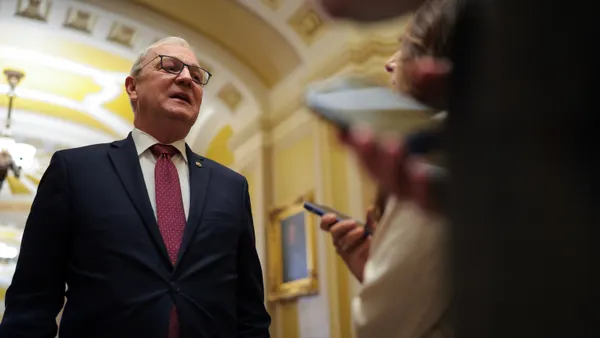Dive Brief:
- The Biden administration announced a four-year extension of Section 201 tariffs on solar cells on Friday, easing some restrictions put in place by the previous administration.
- The decision doubled the tariff rate quota to 5 GW annually and upheld the exclusion for bifacial panels, which are common for large-scale projects.
- The tariffs, imposed by President Donald Trump in January 2018, were set to lapse on Feb. 6. The U.S. International Trade Commission had recommended an extension in November after a three-month review to prevent harm to U.S. solar manufacturers.
Dive Insight:
In its fourth quarter market insights report, the Solar Energy Industries Association (SEIA) predicted that if the Section 201 tariffs were extended in February, there would be an improved likelihood that "they'll be extended at the lower rate" due to a broader tariff decrease in November, from the U.S. Court of International Trade.
Crystalline-silicon modules received a 15% tariff, reduced from the prior 18%, along with a reinstatement of the bifacial modules exemption. The tariffs started at 30%.
Doubling the quota for solar cell imports "will benefit both domestic module manufacturers and their customers in the residential, and commercial and industrial segments," Abigail Ross Hopper, president and CEO of SEIA, said in a statement.
Although solar advocates were disappointed with the tariff extension, the broader effort to lobby for the exclusion of the more efficient bifacial modules was successful. According to SEIA's fourth quarter report, the technology is particularly sought out in utility-scale solar projects.
The U.S. Court of International Trade had reinstated the bifacial modules tariff exemption on Nov. 16. The panels, which can generate electricity on both sides, were a nascent technology when the tariffs were first imposed by the Trump administration.
“SEIA has been fighting for more than three years to preserve the exclusion for bifacial panels, a product not available in the United States at scale," Ross Hopper said. "Today’s decision recognizes the importance of this innovative technology in helping to improve power output and lower costs in the utility segment."
Domestic solar manufacturers have spoken out against the extension, regarding the loophole for bifacial modules and the higher tariff rate quota.
First Solar told Reuters the Section 201 extension "effectively allows China to outflank American efforts to grow self-reliant solar supply chains."













